Have you ever wondered what the world would be like today had Hitler and the Nazis won the war? That scenario would likely include the fact that the Germans successfully invaded Britain. Today, we will examine the German plans for “Operation Sea Lion,” the planned invasion of England and what the consequences for British citizens might have been had the Germans occupied the country.
Did You Know?
Did you know that Stalin and Hitler signed a non-aggression treaty on 23 August 1939? Otherwise known as the Molotov-Ribbentrop Pact, the treaty allowed both dictators to partition Poland into satellite territories for Germany and the Soviet Union. Of course, you knew this. However, did you know that Stalin signed a neutrality pact with Japan on 13 April 1941? Of course, most of us don’t know about this. Yōsuke Matsuoka (1880−1946), Japan’s foreign minister, negotiated and signed on behalf of Hirohito and the government.
The Soviet-Japanese Neutrality Pact had similar consequences. The German treaty allowed Hitler to turn his attention to the west without worrying about a second front (and it secured Stalin’s western boundary). The Japanese pact eliminated a second front for Hirohito’s generals (and it secured Stalin’s eastern borders). By this time, Japan was preparing to attack Pearl Harbor and Hitler was planning Operation Barbarossa, the invasion of the Soviet Union. The Japanese did not know if Hitler was going to invade England or the Soviet Union. By then, Hitler had given up on invading the British Isles and it is thought that had the Führer informed Japan about his intent to invade Russia (22 June 1941), the Japanese may have launched an attack on Siberia (likely sparing Pearl Harbor). After Matsuoka failed in his attempt to convince the Japanese cabinet to tear up the treaty and attack the Soviet Union, he resigned in disgrace.
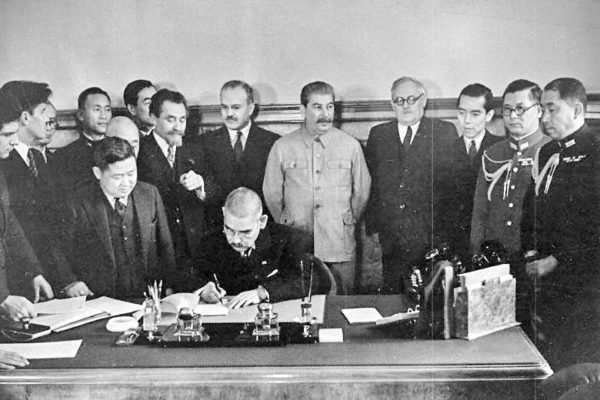
Despite Roosevelt’s attempts to “bribe” Stalin into committing to fight the Japanese alongside the Allies, the Soviet Union remained “neutral” with respect to the war against Japan. That is, until America dropped the bomb on Hiroshima. Stalin tore up the Soviet/Japanese neutrality pact and invaded Manchuria and Korea. Stalin joined the fight against the Japanese in the waning days of the war and reaped the expected rewards.
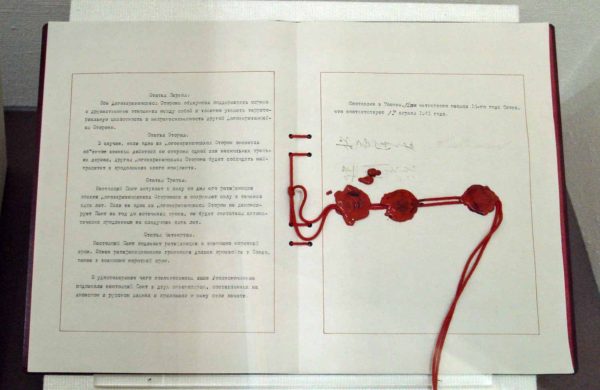
As we’ve seen throughout history, a treaty with a dictator or totalitarian regime is only as good as long as the regime needs it to be.
War-time Nazi Documents
Most of us are aware that the Germans were fastidious in their attention to detail and documentation. Toward the end of the war as they began retreating from the occupied countries, many documents were destroyed to prevent them from ending up in the hands of the Allied army. At the same time, Himmler gave orders to destroy all evidence of Nazi crimes in the concentration and extermination camps. Similar scenarios occurred in Berlin as the Soviet army began its final assault.
However, despite the Nazis’ attempts to eradicate the history and documentation of pre-war and war-time decisions, millions of documents survived. These documents include the architectural plans for extermination camps (e.g., KZ Treblink and KZ Auschwitz II-Birkenau), transcripts of interviews with captured Nazis (e.g., Dr. Charles S. Bendel⏤supervisor of nine hundred men who worked the crematoriums at Auschwitz II-Birkenau), and German memorandums about certain events (e.g., Kristallnacht). Today, historians can access these documents in person or on-line through organizations such as the United States Library of Congress, United Kingdom National Archives, U.S. Holocaust Memorial Museum, the Arolsen Archives, and Russian archives, to name just a few.
During 1945, one of the top priorities for the Allies was tracking down German files. They knew original documents would be needed to convict the Nazis of war crimes and crimes against humanity. Documentation specialists accompanied the army and inspected tons of captured documents (click here to read the blog, The Theft of the Mona Lisa). After reviewing the documents, the specialists forwarded this cache of information on to the people in Nuremberg who were preparing for the trial of twenty-four former senior Nazi leaders. The United Nations War Crimes Commission contributed original documents to Allied prosecutors. Eventually, four thousand documents were selected by the prosecution to be entered as evidence against the defendants. These documents were registered, photographed, and translated into four languages.
Captured German documents revealed the planning for the invasion of England as well as the post-invasion administration for occupying the island. The details were not pretty.
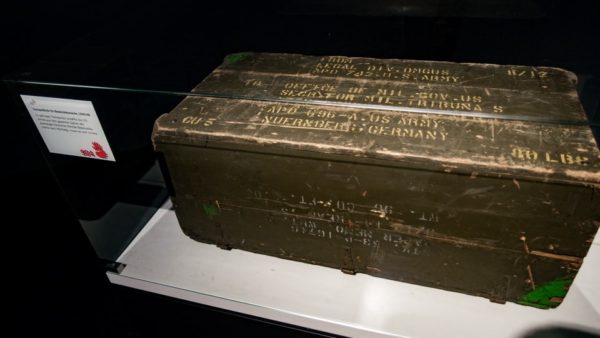
Operation Sea Lion
“The final German victory over England is now only a question of time.”
⏤Gen. Alfred Jodl
OKW Chief of Operations
Personal diary entry 30 June 1940
After Hitler and his military forces invaded and occupied most of Europe, all there was left to do was get Britain to sue for peace. After the capitulation of France, Hitler was convinced (as was most of Europe) that Churchill would agree to the peace accord put forth by Germany. It was probably the first time since 1933 that Hitler was wrong. After appeasing Germany for many years, Britain (and even the former prime minister, Neville Chamberlain) finally recognized the danger Hitler and the Third Reich posed to the world and in particular, England.
The day after the Nazis marched into Paris, Hitler informed his generals that the army had accomplished its mission and it would be the responsibility of the Navy and Luftwaffe to carry on the war against England. The truth of the matter was that the Wehrmacht considered an invasion of England to be unattainable and they didn’t want anything to do with the planning let alone executing the mission. Plans drawn up in late 1939 and early 1940 were rejected because the Navy believed some did not adequately account for British naval power while the Luftwaffe believed they underestimated the Royal Air Force (RAF). By mid-1940, several new plans were developed that received quite a bit of attention from senior Nazi military leaders. However, up to that point, Hitler had turned his attention elsewhere⏤by mid-June, Europe had been conquered. It wasn’t until late June that the Führer was looking around for something new to conquer.
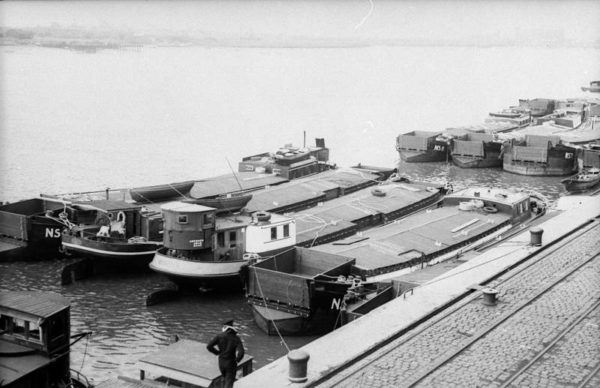
The German military consensus at that time was that the war had been won and there was only one thing left to do⏤bring England to her knees. Gen. Jodl produced a report entitled, “The Continuation of the War Against England.” The report outlined three steps: intensification of attacks by air and sea, “terror” attacks against centers of population, and a land invasion of troops with the intent to occupy the country. Hitler believed England could not win, only preserve its possessions. Directive No. 16 was issued on 16 July 1940 for an early fall invasion of England, or “Operation Sea Lion.”
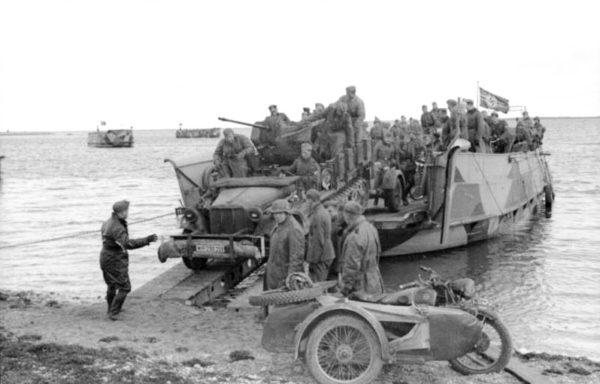
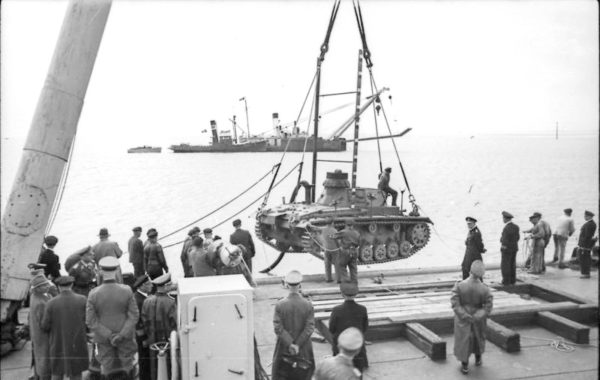
Click here to watch the video clip How did Germany Plan to conquer Britain in WWII? Operation Sea Lion.
The Plan
Army Group A, under the command of Generalfieldmarshal Gerd von Rundstedt (1875−1953), with its six infantry divisions would use Pas de Calais as its launch site⏤the targets were the English beaches between Ramsgate and Bexhill. Four divisions of the German Ninth Army were to cross the Channel from Le Havre, France with their coastal destination between Brighton and the Isle of Wight. The Sixth Army was to depart from the Cherbourg peninsula in France and come ashore at Lyme Bay. The first wave, supported by Airborne forces, would consist of 90,000 men followed on the third day by 260,000 men. (The Allies put 156,000 men ashore on D-Day and by the end of the first week, more than 326,000 troops had secured the beaches.) The second wave would consist of six panzer divisions, three motorized divisions, and within two days, thirty-nine divisions and two airborne divisions would be ready to breakout and head toward London. The commander-in-chief of the Wehrmacht, Generalfieldmarshal Walther von Brauchitsch (1881−1948), told Admiral Erich Raeder (1876−1960) that Operation Sea Lion would be completed within one month and would be relatively easy. Raeder and his Naval High Command knew better⏤they didn’t have the resources to support such a broad front and several days later, Raeder informed the Führer of these concerns. Nonetheless, Hitler believed England’s situation was hopeless and declared the operation must commence no later than 15 September 1940.
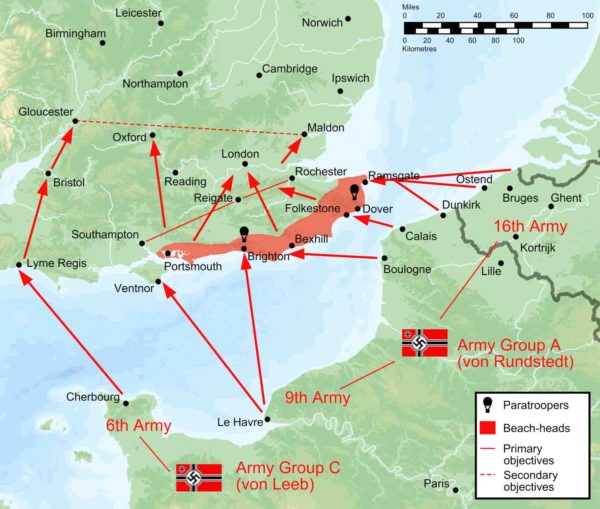
“We shall defend our island, whatever the cost may be. We shall fight on the beaches, we shall fight on the landing-grounds, we shall fight in the fields and in the streets, we shall fight in the hills. We shall never surrender!”
⏤Winston Churchill
Speech to the House of Commons
Response to the Dunkirk evacuation
4 June 1940
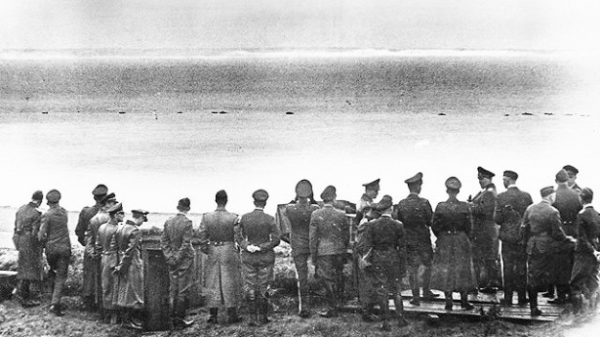
Hitler and his military leaders had severely underestimated Britain’s resolve. It was believed that for the invasion to be successful, the RAF would need to be destroyed and the Channel cleared of all British naval presence. Hitler ordered Hermann Göring’s Luftwaffe to overcome the RAF and the Battle of Britain began on 10 July 1940. By September, it was clear that the Luftwaffe had failed in its mission. Hitler decided to change tactics and on 7 September, the first bombs of The Blitz fell on London. The German navy was instructed to intensify its attacks on shipping. Constant bickering between the Army and Navy over invasion tactics and strategies continued to the point where Hitler was beginning to have doubts about Operation Sea Lion. He began to postpone making the decision to give the “go-ahead” for the 15 September invasion. During the early days of The Blitz, Hitler and the high command believed the bombing of London was causing so much destruction that an invasion might not be necessary. On 14 September, Hitler postponed the invasion and set 17 September as the new date. When the seventeenth came, the conditions for Operation Sea Lion had not been met and Hitler postponed the invasion indefinitely. After years of success, this was Hitler’s first, but not last, military failure.
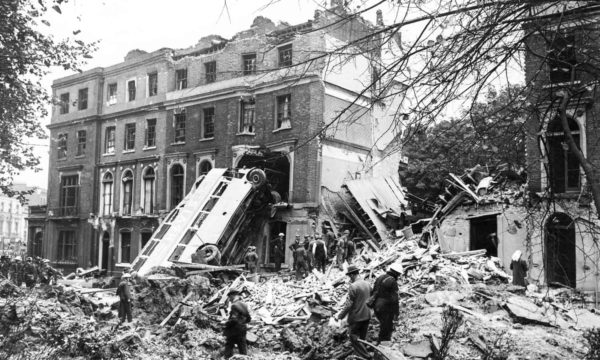
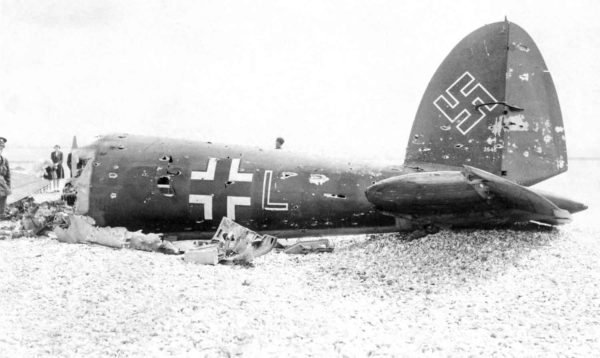
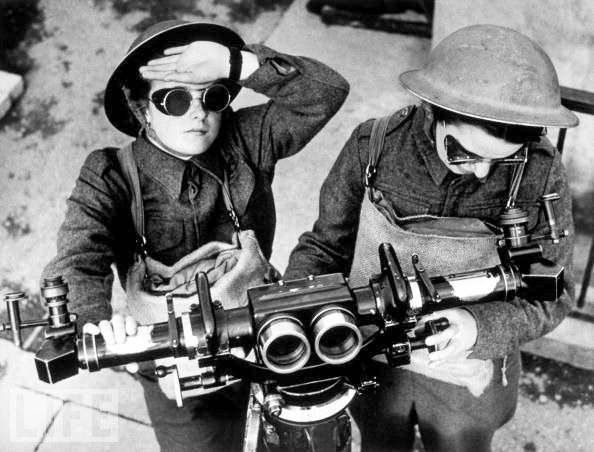
Click here to watch the video clip What Was the Battle of Britain?
Click here to watch the video clip London’s Biggest Blitz (1941).
Click here to watch the video clip The Second World War – Operation Sea Lion.
“Never in the field of human conflict was so much owed by so many to so few.”
⏤Winston Churchill
Speech to the House of Commons
Response to the Battle of Britain
20 August 1940
After the war, many of the former senior military leaders, including Rundstedt, said they considered the plan to be nonsense. One of the key factors was a lack of enough ships including suitable landing craft. Rundstedt believed Hitler really did not have the stomach to invade England. He always believed England would sue for peace. However, the Battle of Britain and the resolve of Churchill and the British citizens quickly put an end to any thoughts of peaceful capitulation.
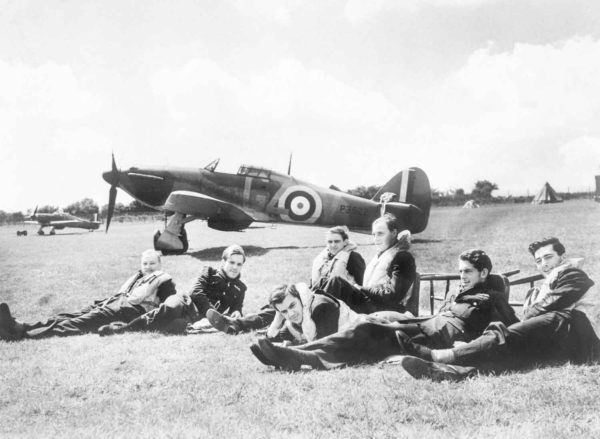
A Successful Invasion of Britain
So, what were the German occupation plans after successfully beating the British and taking control of England? One thing is sure, it would have been ugly. One of the captured documents was signed on 7 September 1940 by Brauchitsch. The document entitled “Orders Concerning the Organization and Function of Military Government in England” pretty much laid out the game plan for how the Nazis would rule England.
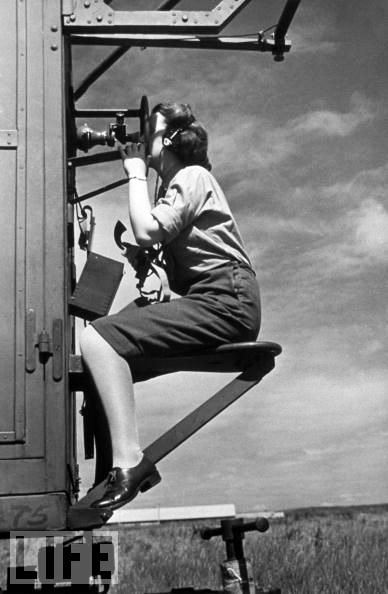
It was to be an occupation of terror and systematic plunder of the country. It called for the immediate arrest of all British able-bodied men between the ages of seventeen and forty-five followed by their deportation to Germany (likely to be used as slave labor). Everything was to be confiscated other than normal household items. Hostages were to be taken for the purpose of executing them in retaliation for attacks on Germans (something they perfected in the occupied countries on the continent). If someone posted anything the Nazis didn’t like, they were to be immediately executed. The same penalty would be applied to anyone not turning in their firearms or radios. However, the real terror was to be handled by Heinrich Himmler and his Reichssicherheitshauptamt (RSHA), or Reich Central Security Office.
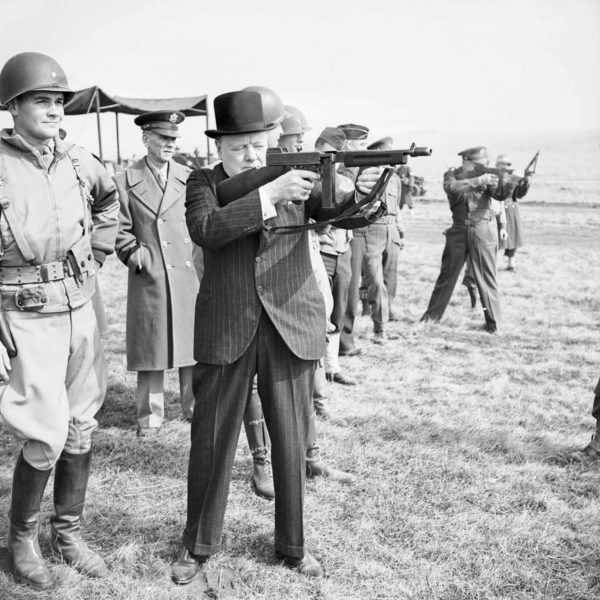
Himmler assigned his second-in-command, Reinhard Heydrich, to oversee the occupation of England. Heydrich’s representative in London was to be SS-Standartenführer Franz Six. Considering Col. Six’s later role in the Soviet Union, it’s not hard to understand why Heydrich assigned him to lead the Schutzstaffel (SS), Gestapo, and Sicherheitsdienst (SD) in England. Heydrich’s plan was to dispatch six Einsatzgruppen (task force of mobile killing squads) to the cities of London, Bristol, Birmingham, Liverpool, Manchester, and Edinburgh (the alternate was Glasgow). The Germans’ first task would be to arrest about 2,300 prominent people who were listed in die Sonderfahndungsliste, or the Special Search List (nicknamed the “Black Book”). Of course, politicians starting with Churchill were on the list. (Hitler wanted Blenheim Palace as his headquarters.) Leading editors, publishers, and journalists made the list. Writers such as H.G. Wells, Virginia Woolf, and Aldous Huxley were included. Sigmund Freud was on the list despite having died a year earlier. Organizations targeted to be shut down included the Boy Scouts. Churchill was to be turned over to Amt VI⏤RSHA Foreign Intelligence while everyone else would become the responsibility of Amt IV, or the Gestapo.
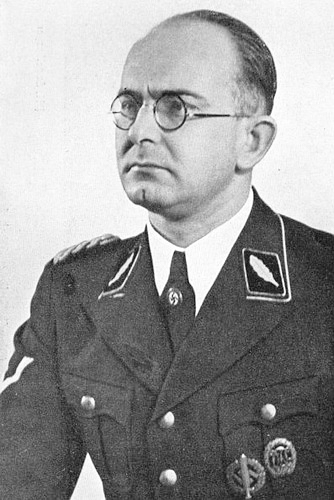
Reporting directly to Col. Six, the Einsatzgruppen would take care of the usual Untermensch such as émigrés from Eastern European countries, senior officials of governments-in-exile, Freemasons, Jehovah’s Witnesses, and of course, the 300,000 Jewish citizens of Britain.
Click here to watch the video clip Otto Ohlendrof, the Einsatzgruppen leader, talks about the……
However, this never came to pass as Hitler turned his attention to planning an invasion of the Soviet Union.
Franz Alfred Six
Franz Six (1909−1975), as a student, was an early supporter of the Nazi party when he joined the Sturmabteilung (SA)⏤the Nazi Brownshirts and Hitler’s original paramilitary organization. By that time, Six had graduated with a degree of doctor in philosophy and was employed as a professor at the University of Königsberg. In 1935, he joined the SD and Heydrich, impressed with Six’s degree, appointed him to head Amt VII of the RSHA. After Operation Sea Lion was abandoned, Hitler turned to his next objective: the invasion of the Soviet Union in June 1941. Now, SS-Oberführer Six, or as he was known, “Professor Dr. Six” would be able to hone his skills as a murderer.
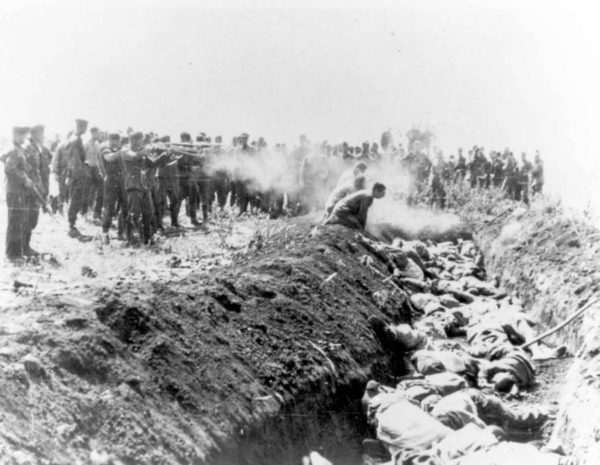
Six was assigned to run the Vorkommando Moscow, a unit of Einsatzgruppe B in the Soviet Union. Einsatzgruppen units typically followed the Wehrmacht into an occupied country (e.g., Poland) for the sole purpose of liquidating Nazi enemies (e.g., Jewish citizens, Roma, or anyone the Nazis didn’t like). Six’s unit was responsible for thousands of murders. As a reward for his Einsatzgruppe’s efficiency, Six was promoted several times by Himmler and reached his final military grade of SS-Brigadeführer in 1945.
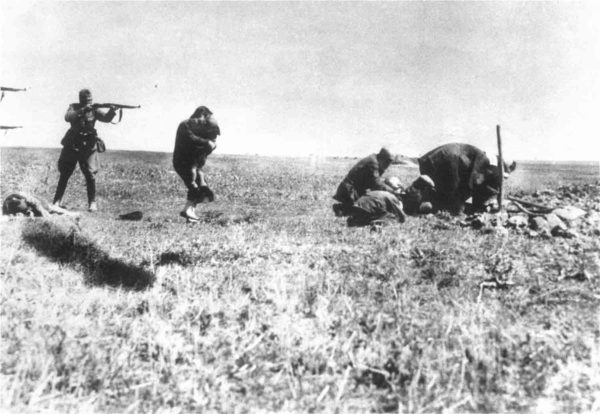
Click here to watch the video clip Einsatzgruppen Creation and Strategy.
When the war ended, Six was arrested and declared a war criminal. He was one of twenty-two commanders and members of the SS Einsatzgruppen put on trial in Nuremberg⏤commonly known as the Einsatzgruppen Trial (Case 9). It was decided that certain Nazi organizations would be indicted as criminal organizations, and any member would automatically be considered a war criminal. This included the Gestapo, the SS, the SD, and the Einsatzgruppen.
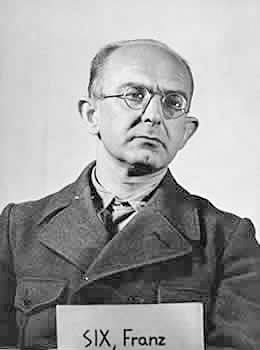
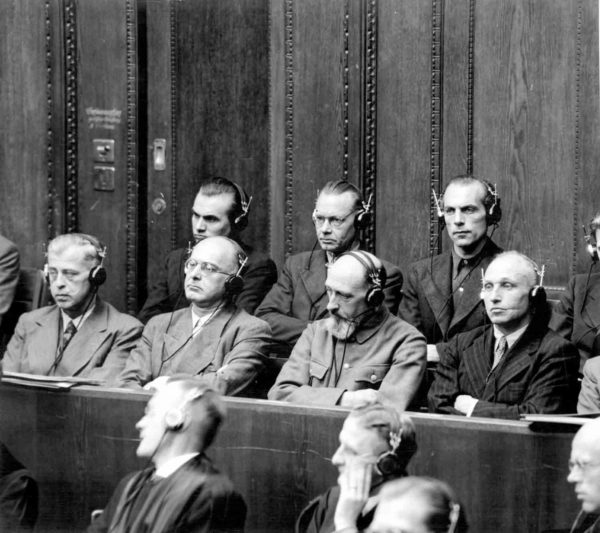
Fourteen former Einsatzgruppe men were sentenced to death⏤only four were hanged. The others were released in the 1950s with the last three men released in 1958. Three received life sentences⏤all were released in 1951. Two men were given twenty-years⏤both were released in 1951. One man received ten-years and he was also released in 1951. Professor Dr. Six received a twenty-year sentence but was released after serving no more than four years.
After his release, Franz Six went to work in Germany as an executive for Porsche. He was called as defense witness for Adolf Eichmann’s 1961 trial in Israel. He had to provide his testimony by deposition as the Israel government told his attorney that Six would be arrested in Israel and put on trial as a war criminal.
★ ★ ★ Learn More About Professor Dr. Six ★ ★ ★
Betz, Dr. Astrid, Dr. Alexandeer Schmidt, and Hans-Christian Täubrich. Memorium Nuremberg Trials: The Exhibition. Nuremberg: Museen der Stadt Nürnberg, 2012.
Kieser, Egbert. Operation Sea Lion. London: Arms & Armour Press, 1997.
Lampe, David. The Last Ditch: Britain’s Secret Resistance and the Nazi Invasion Plans. New York: Skyhorse Publishing, 2013 (original publication date: late 1960s).
Longmate, Norman. If Britain Had Fallen. London: Greenhill Books, 2004.
Mackenzie, S.P. The Home Guard. Oxford: Oxford University Press, 1965.
Shirer, William L. The Rise and Fall of the Third Reich. New York: Simon and Schuster, 1960 (pages 758−792).
Disclaimer:
There may be a chance that after we publish this particular blog, the video links associated with the blog are no longer accessible. We have no control over this. Many times, whoever posts the video has done so without the consent of the video’s owner. In some cases, it is likely that the content is deemed unsuitable by YouTube. We apologize if you have tried to access the link and you don’t get the expected results.
What’s New With Sandy and Stew?
We are making progress with the design of the new book, Where Did They Put the Gestapo Headquarters? A Walking Tour of Nazi-Occupied Paris (1940−1944). There are five walks plus the “Métro Walks” section. Roy has completed everything up through Walk Four. So, we are getting close. The book will be longer in length than the previous books⏤no price change. If you’d like us to reserve an autographed copy for you, please e-mail us and we’ll start a list.
I’m also happy to report that I have completed about twenty-five percent of the second volume of Nazi-Occupied Paris. There will be four walks plus the métro walks. My timetable for completion of the first draft is the end of September 2021. That means we will likely be looking at a mid-2022 date to publish. I can’t wait to publish both books because then Sandy and I will be off to Berlin to begin the seventh book in our series, Where Did They Put the Führerbunker? A Walking Tour of Nazi Berlin (1933−1945).
I appreciate all of you following us on this little journey of ours that started seven years ago.
Thank you to all of you who subscribe to our bi-weekly blogs. It seems there isn’t a day that goes by where we don’t increase our readership. Please let your history buff friends and family members know about our blog site and blogs.
Someone Is Commenting On Our Blogs
I’d like to thank Umi S. for contacting us regarding our blog, Women of the Italian Resistance (click here to read). Umi is a published author (Belonging) who is writing a new historical fiction novel. Umi, who lives in England, took English classes in the late 1960s from Claire H. Sansom (not to be confused with Odette). Claire worked for the British-led Special Operations Executive (SOE) during the war. She never revealed her war-time activities to anyone. Umi wondered if I had heard of her and could supply any information on Claire’s time with the SOE. Claire was the daughter of Sir George Bailley Sansom, an expert on Japan. My research led me nowhere. Other than Sir George’s profile on his professional work, there was no information out on the internet about father or daughter. So, I reached out to my friend, Paul McCue. He is a trustee of a non-profit organization in England dedicated to educating people about the SOE and its agents. Paul knew right away who Claire was and in fact, had access to her government file (declassified in 2017) and was kind enough to forward it to Umi. If you would like further information on Paul’s organization, The Secret World War 2 Learning Network, please go to www.secret-ww2.net.
I love getting requests like the one Umi sent. It reminded me of Hilton Hilliard’s daughter’s request for me to locate her father’s Gestapo prison cell in Paris. (click here to read the blog, Rendezvous with the Gestapo) Please keep in touch with us.
If there is a topic you’d like to see a blog written about, please don’t hesitate to contact me. I love hearing from you so keep those comments coming.
Why Would You Want to Buy Our Walking Through History Books?
Simple.
You like to travel and experience history and historical events. You like to see original buildings that had a significant impact on the people and events of the history you’re engaged with. You want to know the stories behind the brick and mortar in front of you.
The walking tour books are meticulously researched so you can go directly to those sites and learn about the building’s history as well as an introduction to some of the more interesting people associated with it.
We Need Your Help
Please tell your friends about our blog site and encourage them to visit and subscribe. Sandy and I are trying to increase our audience and we need your help through your friends and social media followers.
Thank You
Sandy and I appreciate you visiting with us. We have some exciting things on the horizon, and we’ll keep you updated as we go along.
Share This:
Follow Stew:
Find Stew’s books on Amazon and iBooks.
Please note that we do not and will not take compensation from individuals or companies mentioned or promoted in the blogs.
 Walks Through History
Walks Through History
Copyright © 2021 Stew Ross

